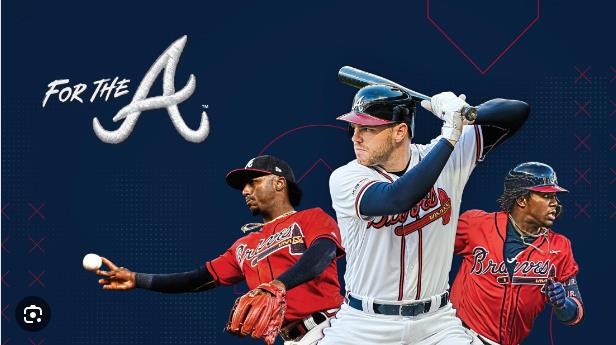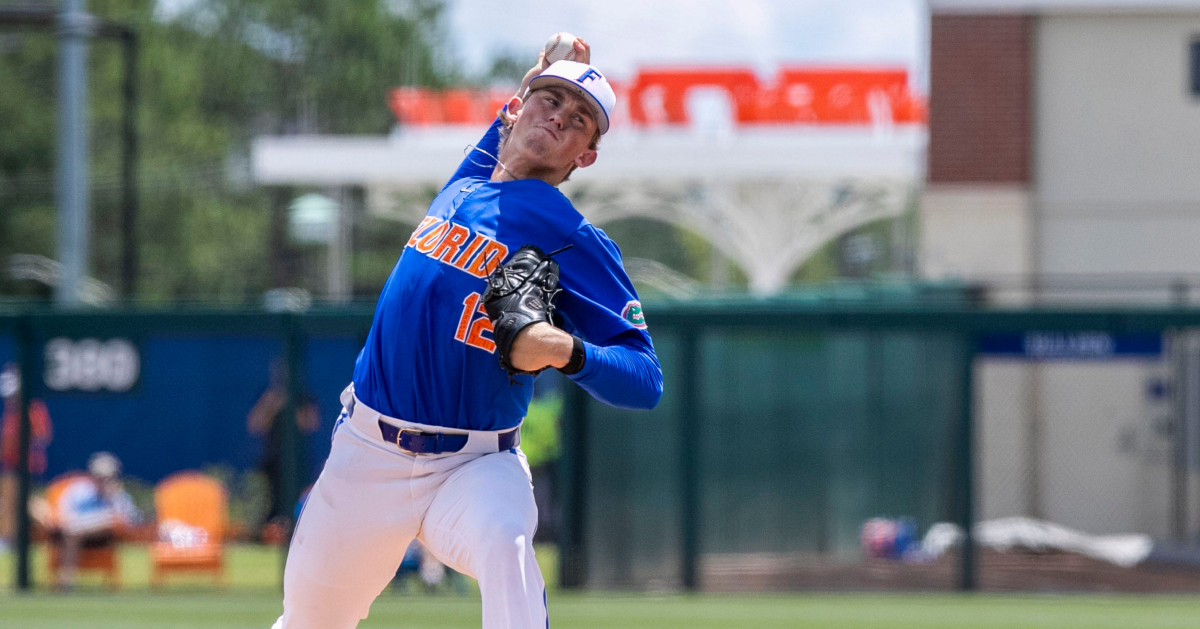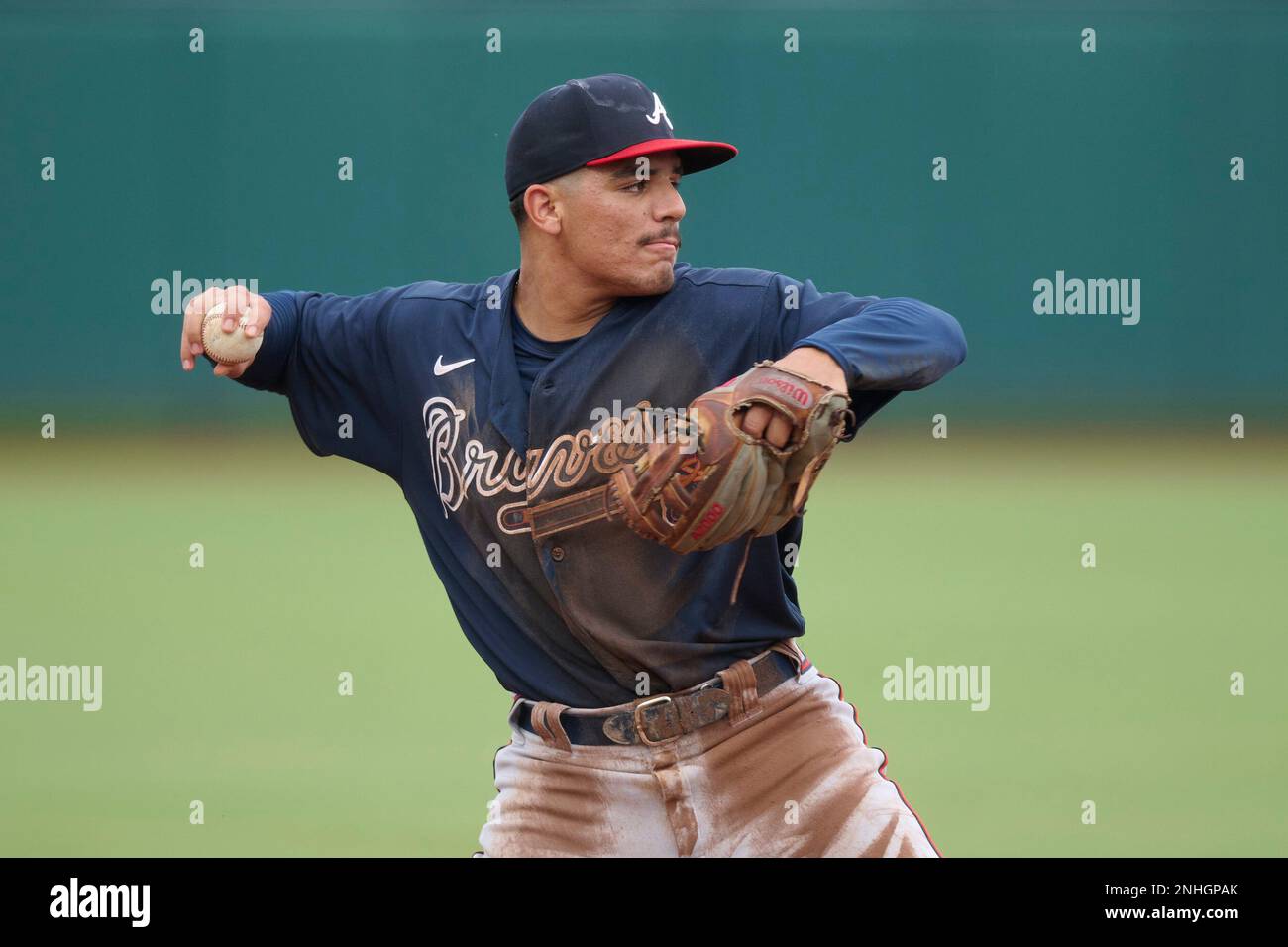
With the promotion of young players and numerous deals to upgrade the major league roster, the Atlanta Braves’ farm system is widely regarded as being in the lowest third of baseball in terms of quality and quantity.
But here at Braves Today, we believe in both Atlanta’s minor league talent and the organization’s reputation for nurturing that talent.
Here’s how we’d rank the top prospects in the farm system before the 2024 season.
(The criteria for prospect eligibility are less than 130 at-bats, 50 innings pitched, or 45 days on the MLB roster.)
Scouting report on Hurston Waldrep, #1 RHP. Waldrep, our top prospect and a major league spring training invitee, has a more defined arsenal than Smith-Shawver and perhaps the greatest non-fastball in the system in his splitter, thus he now holds the top slot.

Waldrep does an excellent job of using his fastball up in the zone, which averages 95 and might reach triple digits early this season. The pitch has an average ride life and limited horizontal movement, so establishing his secondaries will be critical in keeping hitters from teeing off on it. However, the secondaries are led by a ferocious splitter, thrown in the mid-to-upper 80s from the same release position and tunnel as the fastball before completely sliding off the table late. Waldrep also throws a vertical breaking curveball and a mainly horizontal slider with late drop, providing him a diverse four-pitch mix across different velocity ranges.
But there are certain development issues to work out with Waldrep. Because of his higher-effort delivery, control has not always been there, and sometimes challenges with finding his secondary strikes result in not only walks but also big hits. When he fails to establish the splitter as a strike pitch, hitters can ignore it, forcing Waldrep to throw too many fastballs in the zone and try to force pursuit on the slider. It will be intriguing to watch how Atlanta addresses making him MLB-ready, but all indications are that his fastball/splitter combination can play at the major league level right now, and we should see him at some point this season.
#2: RHP AJ Smith-Shawver.
Scouting Report: Smith-Shawver, believe it or not, is the best athlete in Atlanta’s system and is brimming with natural talent, which is one of the reasons he was able to pitch in the Major Leagues only two seasons after becoming a full-time pitcher. (Smith-Shawver, like many Braves draftees, was a two-sport athlete in high school, playing quarterback for both the football and baseball teams).

It’s some of the best natural arm talent in the organization, with a fastball that sits at 95 mph and can reach 100, coming in at a low approach angle that allows it to play up in the zone. The slider is also a dominant weapon, with a rating in the mid- to upper 80s. Smith-Shawver reintroduced the curveball after not using it in 2022, and both it and the changeup show promise for a genuine four-pitch mix in an extremely athletic package.
Part of the rationale for his placement at two instead of one is the rawness of the profile; as previously said, Smith-Shawver still has more development to go than a typical pitcher who has just made his MLB debut. However, his natural arm talent and athleticism are apparent, and he has the potential to be the finest pitcher in this entire farm system within three years.
#3: , right-handed pitcher
Scouting report: Schwellenbach is another Tommy John patient, having the procedure his final year at Nebraska and not returning to the moSpencer Schwellenbachund until the 2023 season. Unlike most TJ players, his control returned before the swing and miss, with a low walk rate that actually increased when he moved up to High-A Rome for his last starts of the season.
/cdn.vox-cdn.com/uploads/chorus_image/image/69674789/1322237389.0.jpg)
It’s a fascinating bundle, and I’m keen to see how Atlanta improves it. The fastball has high velocity, resting in the upper 90s and nearing 99 mph, but its life in the zone isn’t always outstanding, and there are likely some spin efficiencies in the hand placement and delivery. The challenge of generating effective spin can also be observed in the secondary pitches, which include an inconsistent slider that comes out in the mid to upper 80s, occasionally appearing as a cutter, as well as a vertically breaking curveball and a really strong changeup with solid drift in the mid-80s.
Given Atlanta’s history of shelving curveballs to improve a pitcher’s slider, I see Schwellenbach spending a significant portion of 2024 in Rome, working on that fastball/slider/changeup trio for a more lateral game, with potential work to make the fastball a two-seamer or even a cutter if the IVB doesn’t tick up as he gets further away from the procedure. But if everything clicks to start the season, Schwellenbach is my pick to “break out” (as much as an organization’s #3 prospect can).
#4: RHP Owen Murphy.
Scouting report: Murphy is another potential “frontline” starter for Atlanta in the future, with a four-pitch mix that, while lacking in power at the moment, has a lot of potential as he continues to physically mature and evolve as a pitcher.

Murphy covers four velocity bands with his upper-70s curveball, slider in the upper-80s, and changeup, which is still in development but has the potential to be an above-average pitch. His low-90s fastball plays up when high in the zone. It’s a clean delivery with outstanding control, so the next phase is to enhance the tertiary pitches (the slider improved greatly throughout the 2023 season) and add some velocity and power.
#5: RHP JR Ritchie Scouting Report: Ritchie, whose first full season was cut short after less than 14 innings due to Tommy John surgery, ranks last among the organization’s top pitching prospects due to the uncertainty surrounding his return from injury.
Prior to the TJ, he had a power fastball that sat in the mid-90s and reached 98 with terrific life up in the zone. The major secondary was a sweepy-ish slider in the low-to-mid 80s, as well as a promising changeup that was mostly utilized against lefties but produced terrific swing and miss when properly commanded.
Ritchie is expected to return to competitive action in July or August, which is ideal timing for him to shake off some rust, have a typical offseason to improve, and then potentially advance quickly through the organization in 2025.
#6: SS
Scouting Report: Perdomo is the crown jewel of Atlanta’s most recent J15 class, having signed for $5 million in January. A experienced foreign scout compared Perdomo to a young MJosé Perdomoiguel Cabrera (don’t do that), and he is regarded as a future major-league shortstop with excellent contact and power potential. If he has to move off of short, he has a few options: the arm power should allow him to kick out to third, and the soft hands and motions should allow him to slip into second.
At this point, professional baseball experience is primarily required. Atlanta has stated that Perdomo will be paced this season, so don’t anticipate him to leave the DSL, but “all bets are off” in 2025 if scouting is correct about his offensive abilities.

#7: SS/3B Ignacio Alvarez’s Scouting Report: Many external evaluators regard Alvarez as a tweener, with insufficient power for third base and insufficient defensive skills to play shortstop. The reality is likely somewhere in the middle, with concerns about his range but the arm and defensive abilities to stick at shortstop and power figures that, while not outstanding (102.2 90th percentile EV), are in line with MLB averages.
What Alvarez does have going for him is a fantastic hit tool, making contact at nearly 85% of the time last season, and the power could come once he plays in a more neutral ballpark than Rome’s – Alvarez had a.418 slugging percentage on the road but a.364 at home and an OPS over 100 points higher when not in Rome. I’m hoping for an assignment to AA Mississippi this season, not because it’s a terrific power park (it may be worse than Rome), but because Alvarez is an extremely patient hitter who swings substantially less than average. That’s a strategy that usually demands adjustments once it reaches the upper levels, and I’m curious to watch how his intensity at the plate changes when he encounters superior pitchers who can execute on the margins of the zone.
#8: OF Luis Guanipa.
Scouting Report: Guanipa was Atlanta’s key acquisition from last year’s international free agency class, signing for $2.5 million. Despite a dismal finish to his DSL season, in which he batted only.183 in the last month, Guanipa already possesses remarkable (age-adjusted) exit velocity stats due to his incredible bat speed. He’s really fast, with 70-grades flashing as he runs down balls in the gap from centerfield, albeit his arm strength is a tad weak.
/cdn.vox-cdn.com/uploads/chorus_image/image/72358375/1237061862.0.jpg)
A transfer stateside should allow Atlanta’s player development to continue to reinforce his solid but not spectacular contact numbers, positioning him for a breakout in the minors this season. It’s an intriguing profile with possibly four tools, but there are still hit tool questions that can’t be resolved in the DSL (because to the calibre of opposing pitching).
#9: 1B/3B David McCabe’s Scouting Report: McCabe is likely the strongest power hitter in Atlanta’s development system, but he’s not a one-trick pony: With a contact percentage of more than 80% this season and 10 stolen bases, he’s demonstrated some versatility in his profile. His offensive game is far better as a left-handed batter, with an OPS about 140 points higher than while hitting right-handed.
Originally a first baseman in college, Atlanta has worked him extensively at third base as a professional, but his future in major game play is as a first baseman and designated hitter owing to subpar range and bad transfers. Fortunately, Atlanta’s DH position could be open as early as 2025.

#10: RHP Cade Kuehler.
Scouting Report: Kuehler threw a lot of pitches in college, but he trimmed them down during his two professional starts with Augusta. The repertoire is anchored by a devastating four-seam fastball that clocks in at approximately 95 mph and has an elite-level 20 inches of induced vertical break, allowing it to play up in the zone. As a pro, he mostly focused on a power look, with a spinning slider in the mid-to-upper-80s and a low-to-mid-80s splitter that seems to be a fastball out of the hand before dropping down late.
Whether Kuehler brings back the curveball and cutter he threw in college will depend on his ability to throw them for strikes, with biomechanical quirks in the delivery adding deception but detracting from control. An ideal start to 2024 is a promotion to High-A Rome followed by a late-season promotion to Double-A Mississippi, but workload will be a concern – Kuehler threw only 80 innings combined between college and the minors in 2023 and is unlikely to go much beyond 100 or 110, potentially limiting his late-season availability.
#11: C David Baldwin
Feature: Prospect Drake Baldwin can establish himself as Travis d’Arnaud’s successor this spring.
#12: RHP Drue Hackenberg.
Scouting Report: Hackenberg may be a sinker/slider with questionable college performance, but he has the potential to be the best version of a sinker/slider, which is why the Braves drafted him in the second round and paid him overslot to sign.

Hackenberg’s sinker had about a foot and a half of armside run in college last season, whereas most MLB sinkers had 10 inches or less. The slider is in the mid-80s, and while the shape isn’t always consistent, the two pitches combine for a groundball rate of more over 50%, giving Hackenberg the look of a better Bryce Elder. The key to improvement will be consistency in the slider – does he want it to generate more swing-and-misses, as the sweepier version did in college, or does he want it to keep its form as a groundball inducing option and possibly improve the (now lefty-only) changeup to generate whiffs?
Scouting report for #13: RHP Jhancarlos Lara. Lara was 19 years old, older than the average DSL participant in 2022, but his performance was extraordinary for anyone’s age, with a 1.78 ERA in ten games. While his stats in his first two seasons in the United States were not as impressive as in the DSL, he did grow as a pitcher, “flipping a switch” in late June and dominating down the stretch. Lara mostly uses a power approach, with an upper-90s fastball with strong (but not tremendous) zone carry and an upper-80s hard slider.
This season’s developmental goals will include sharpening and better incorporating the changeup, which he showed off on occasion in 2023 but threw less than 10% of the time, as well as the standard command and control improvements that all young pitchers must demonstrate once they’ve physically adjusted to full-season ball.
Leave a Reply